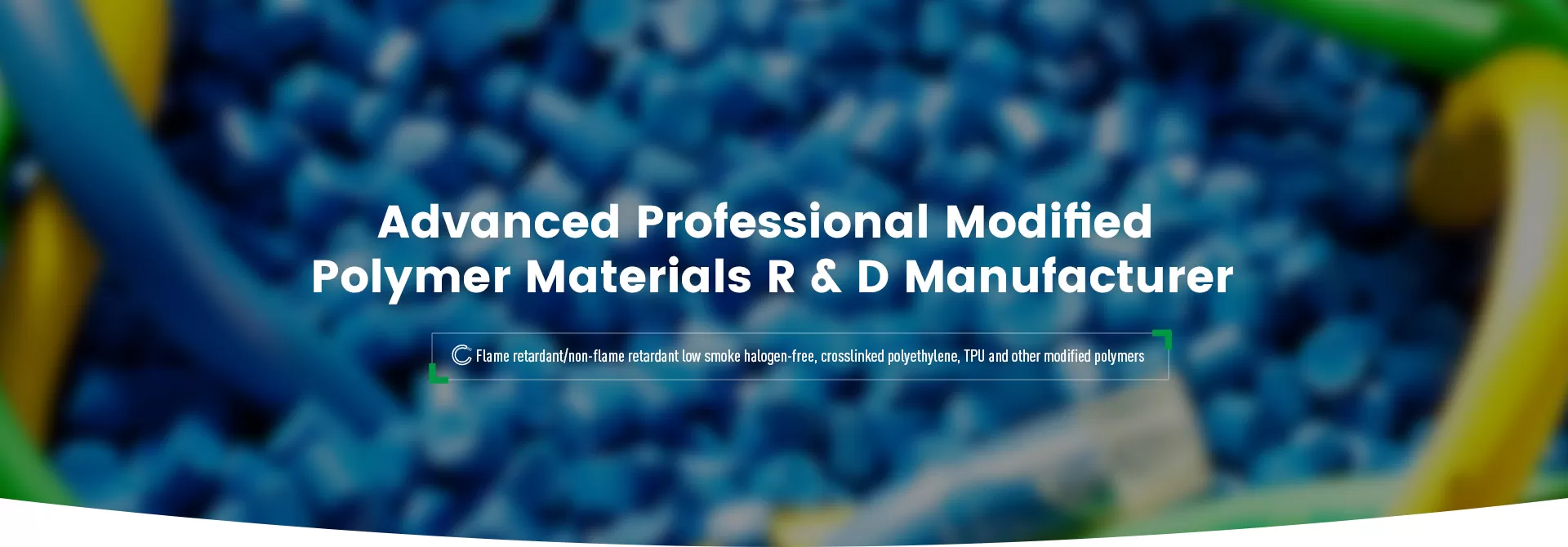
Automotive polyolefin elastomer mainly refers to polyolefin elastomers used in the production of automotive high-voltage cables.
Polyolefin elastomer, referred to as POE, usually refers to polyolefin elastic materials prepared by a specific catalytic system (such as metallocene). It is soft and elastic like a rubber at room temperature, but its processing method is similar to that of polyolefin plastics. It can be thermoplastically extruded, injected, and blow molded without vulcanization and can be recycled.
In automotive wiring harnesses, wires and cables, POE is often used for:
Insulation layer/sheath layer (especially in scenarios requiring low-temperature flexibility, halogen-free flame retardancy, low smoke and toxicity, and low VOC);
Blended with resins such as PP, PA, and EVA as a toughening or softening phase to improve impact resistance or low-temperature performance;
Can be used with halogen-free flame retardant systems (such as ATH/MH, phosphorus nitrogen system) to achieve regulatory compliance (RoHS/REACH/ELV, LSZH, etc.).
Key point: POE is a thermoplastic material; while EPDM is a thermosetting rubber (requires vulcanization). This has a great impact on processing cost and recyclability.
| Comparison dimensions | POE (Automotive Polyolefin Elastomer) | TPE‑O (PP/EPDM blend) | EPDM | TPU |
| Material properties | Thermoplastic Elastomer | Thermoplastic elastomer | Thermosetting rubber (needs vulcanization) | Thermoplastic elastomer |
| Typical hardness range | Varies with the formulation | Harder than POE | Varies with formulation | ≥ShoreA 70 |
| Low temperature flexibility | Strong (-40℃) | Varies with formulation | Varies with formulation | Varies with formulation |
| Heat resistance level (continuous) | Common to about 100℃–150℃ | Slightly better than POE | 125℃–150℃ | Around 80℃–125℃ |
| Oil/chemical resistance | Varies with the formulation | Varies with formulation | Excellent | Excellent |
| Flame retardant/halogen-free | Easy to make halogen-free flame retardant (ATH/MH/phosphorus nitrogen system) | Achievable | Needs flame retardant system | Achievable |
| Density/lightweight | 0.85g/cm^3–0.90g/cm^3 | Good | Good | Varies with formulation |
| Processing method | Thermoplastic extrusion/injection molding, short process, recyclable | Same as left | Needs vulcanization, non-recyclable | Thermoplastic extrusion/injection molding |
| Cost (relative) | Competitive | Competitive | Medium (+vulcanization process cost) | High |
| Typical cable scenarios | In-vehicle wiring harness, weak current/signal line Halogen-free flame retardant thin-wall wire | Same as POE, but more rigid/heat resistant | Submersible pump cable | Charging gun cable, industrial cable |
Priority: POE/TPE-O
Focus: low-temperature toughness, halogen-free flame retardant, VOC, cost
If higher surface hardness/heat resistance is required (but still thermoplastic processing), POE/TPE-O may be more suitable;
If softness/low-temperature performance is preferred, POE is more common.
Priority: EPDM, XLPE, FEP, silicone rubber, etc.
If POE must be used, cross-linking + special formula is required, but the overall continuous temperature resistance, oil resistance and aging retention rate still need to be carefully evaluated.
Mainstream: cross-linked polyolefin (XLPE), silicone rubber, etc.
If POE is cross-linked and the formula is optimized, it can cover some working conditions, but it still needs to be carefully verified under the extreme requirements of high temperature level (125℃/150℃) and oil resistance/dielectric performance.
Mainstream: TPU (strong mechanical and wear-resistant performance);
If low-temperature flexibility, cost, environmental protection and wear-resistant requirements are emphasized, POE can be considered (the surface wear resistance and tear resistance can be improved through the compatibilizer/filler system in the formula, but it is usually still inferior to TPU).
A: Some formulas and cross-linking systems have a chance, but please refer to the standards and actual tests. If your application is a long-term 125℃/150℃ level, the more common solutions are still XLPE, EPDM, silicone rubber, FEP/ETFE, etc.
A: The material itself does not mean flame retardant/halogen-free; it needs to be achieved through formulations (such as ATH/MH, phosphorus nitrogen system) and tested by relevant standards (IEC 60754/61034, VW-1, FT1/FT2, etc.).
A: Simply put: POE is softer and has better low-temperature performance; TPE-O is "harder" and slightly more heat-resistant (due to PP crystal phase). Both can be thermoplastic processed, depending on your indicator priority.
A: If your wear resistance/cutting resistance/rebound requirements are not extreme, there is a chance; but if your goal is extremely high mechanical durability and cutting resistance, TPU is still a more reliable choice.
A: Representative POE systems usually perform well under the VOC/fogging requirements in the car, but actual atomization, odor level and other tests must be done, and different formulations vary greatly.
A: It depends on your temperature resistance, electrical properties, and mechanical retention requirements.
No cross-linking → high processing efficiency and recyclability;
Cross-linking → the upper limit of performance can be raised, but the cost/process complexity also increases.